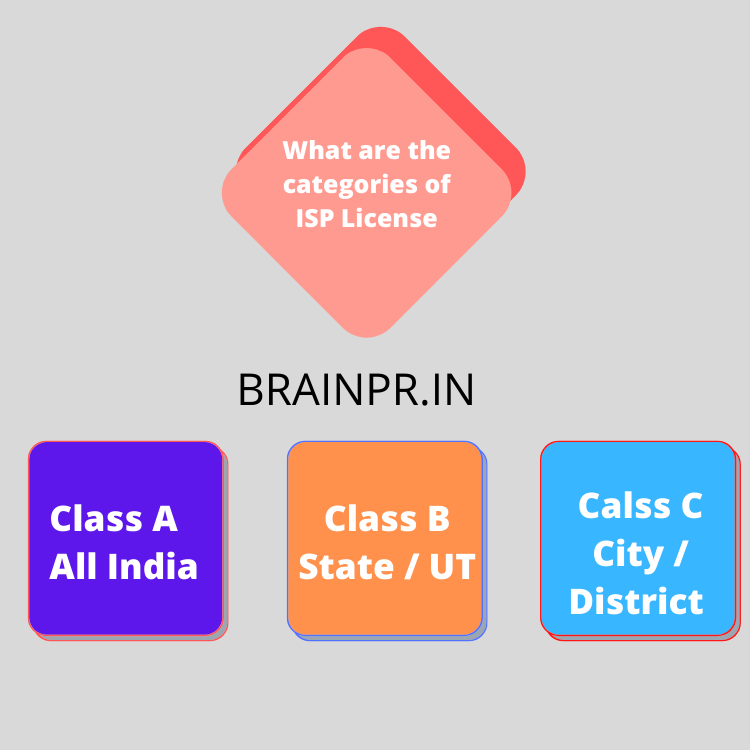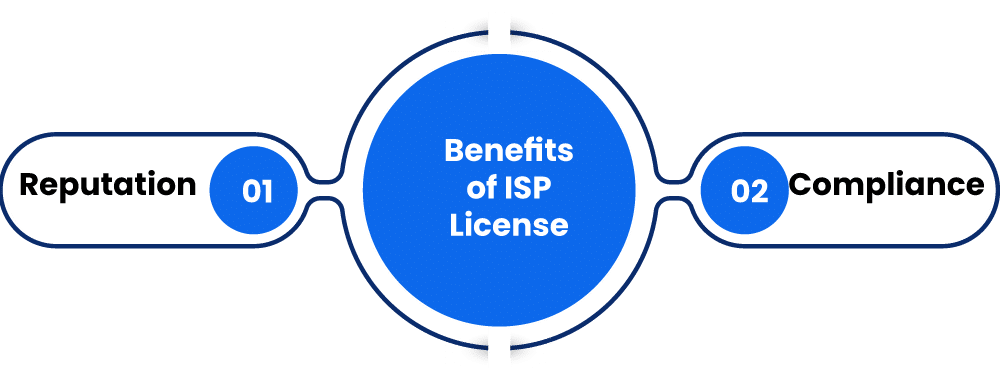In today’s scenario, the Internet is a basic need of everyone. We can see use of the Internet in all areas like Schools, Colleges, Corporate, Hospitals, Banks, Government Offices Etc. The Internet is a very important thing in everyone’s life, It has made life very simple.
Initially Government of India, Department of Telecommunications (DOT) started to provide Internet services or all telecom-related services in India by Videsh Sanchar Nigam Limited. At a later stage, as demands get increased, the Government of India has opened up the doors for the Private Sector as well. Now Private Sector Companies can also apply for an Internet Service Provider (ISP) Licence. This license is commonly known as a Unified License (UL). Private Sector companies can apply for ISP licenses for different areas under Unified License. It is mandatory for Company to have a Unified License for providing ISP services for a certain area. One Company can acquire only one Unified License (UL), but can also apply for more than one ISP Authorization for other areas.
Types of License

Regulatory Body /Authority
The primary regulatory body or authority for issuing the Internet Service Provider License is the Department of Telecommunication (DOT). The Government of India has come out with a system of Unified License for electronics and telecommunication. Such a system allows the license holder to apply for the Internet Service Provider License in different areas.
Such a license is required by the applicant to operate an ISP within a particular area. Hence from the above, it can be understood that there is no form of a separate license for the ISP. Only for ISP authorization purposes, the Unified License would be allowed.
Benefits of ISP License

Reputation-
By securing an ISP license in India the applicant would be reputed in the eyes of the public.
Compliance-
An applicant receiving the above license would be compliant with the requirements of the DOT
Eligibility Criteria for Applying for ISP License
The following eligibility criterion has to be satisfied by the applicant to apply for the ISP license:
The applicant must be a company registered under the Companies Act, 2013 or the Companies Act, 1956.
What are the categories of ISP License?
ISP license is categorized into three following categories:
The following categories depend upon the various factors such as City/State/Town/District/Village:
- Class A (National Area)
- Class B (Telecom Circle/Metro Area)
- Class C (Secondary Switching Area)
How much fees will be involved?
The government of India has taken initiative to promote the accessibility of the internet in those towns, cities & villages where people has less access to the internet. For this purpose price of the class, C is cheaper than the price of a Class A or B license.

Procedure for Securing the ISP License in India
Step 1- Register Company
First the applicant has to register the company under the Companies Act, 2013 or previous company law. For this the applicant has to go to the Registrar of Companies ISP License in India.
Step 2 – Choose the Category of ISP
The applicant has to select the correct category for the ISP license. There are different categories of ISP license. Either the applicant can go for Class A or Class B or Class C category. If an applicant wants to go for Class A it is more expensive compared to other classes.
Step 3 – Conditions related to Budgeting and Financing
The applicant has to select which class to consider based on the budgetary requirements of the company. Based on the above, the applicant has to go for a particular category.
Step 4 – Fill in the application form
Once the category of ISP license is determined by the applicant, then the application form can be filled. With this form, a non-refundable fee must be provided to the department. The fee which has to be deposited is INR 15,000/-. Along with these two copies of the application form must be provided along with the application. Such fee must be paid in the form of a Demand Draft or a Pay Order payable at New Delhi issued in the name of Pay & Accounts Officer (Headquarter) DOT. After this the applicant should also provide the requisite documentation.
Step 5 – Submit the Application
Once the application is completed, the same will be submitted to the Department of Telecommunication. After this it will take about 60 working days of the department to get back with the application.
Step 6 – Issue of Letter of Intent
If the application has no form of inconsistencies or errors, then the DOT will issue a letter of intent in favour of the applicant. However, if there is some form of problems or inconsistencies with the application the same will be rejected by the department. Any reason for rejection would be mentioned by the department. Common reasons for rejection include non-compliance with legal or regulatory problems. Hence it is crucial for the applicant to secure some form of sound advice from an ISP consultant before submitting the ISP application with the Department under the system of Unified License.
Step 7 – After the Letter of Intent is secured
After the department provides the applicant with the letter of intent the following requirements have to be carried out by the applicant.
- The requirement to submit- is a one-time fee along with a specific form of bank guarantees. The amount which has to be submitted is as follows:• Rs 2.4 Crores for Category A• Rs 13 Lakhs for Category B• Rs 90,000 for Category C
- Along with the above, the applicant would have to sign an agreement with the DOT. This agreement is the license agreement that the applicant enters into with the DOT.
- All the above requirements have to be fulfilled by the applicant within a specific span of time. Once the letter of intent is provided such requirements have to be carried out by the applicant.
Step 8- Confirmation
If all the above procedures go smoothly, then the department would provide an unconditional confirmation and grant the Unified License for a period of 20 years. The DOT will contact the applicant if the application has been accepted.
Documents Required for ISP registration
The following documents are required for ISP license registration:
- Company Incorporation Documents
- Certificate of Incorporation
- Memorandum of Association
- Articles of Association
- Directors Details
- Bank Guarantees
How to file an application for ISP license in India?
- The first step is to select an ISP license category thereafter an application is required to be filed.
- An applicant has to pay a non-refundable Processing Fee of INR 15,000/- either by DD or Pay Order from a Schedule Bank payable at New Delhi on the name of Pay & Accounts Officer (Headquarter) DOTalong with the two copies of the application form.
- Besides this, other official documents are required to be provided as per the prescribed guidelines of the government.
After filing an application form along with the prescribed fees, the Telecom Department of the Government will verify the application and respond back within a period of 60 days. After verification, if DOT finds no issue then the department will issue a “Letter of Intent”.
What will be the validity?
ISP authorization will be issued for a period of 20 years under the Unified License.
Hire a professional to avoid Rejection
However, in case of any issue department (DOT) may delay in giving a response within a prescribed period of time. The issue can be raised by the department due to incomplete submission or information, non-compliance, incomplete documents, etc.
To avoid such rejection of an application one must hire a consultant to review the application or file on your behalf with the department. As the ISP licensing process is quite technical. There are many instances in the past where the application is rejected due to the above-mentioned reasons. Therefore it is always advisable to hire a professional for documentation to save time and money.
